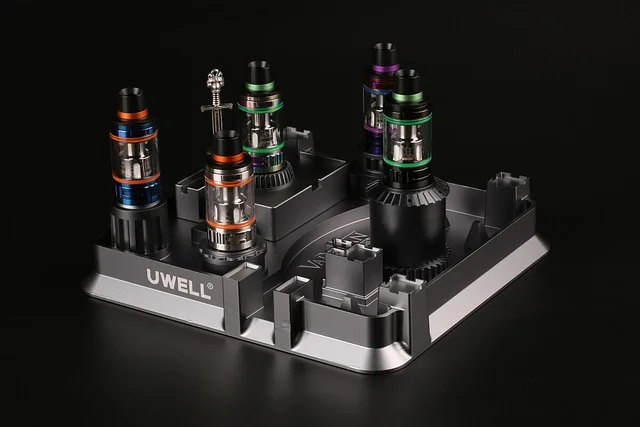7 Shocking Truths About E-Cigarettes Versus Traditional Smoking: Does E Cigarettes Cause Cancer?

The debate around whether does e cigarettes cause cancer has intensified in 2025 with new research findings. According to a 2025 industry analysis, global e-cigarette sales have reached $28.9 billion, while a study from the International Agency for Research on Cancer shows concerning trends in vaping-related health impacts. This comprehensive guide examines the latest scientific evidence, compares vaping to traditional smoking, and provides actionable insights for consumers concerned about does e cigarettes cause cancer risks.
Table of Contents
- 📊 2025 Research Findings on E-Cigarettes and Cancer
- 🔍 Vaping vs Smoking: A Detailed Market Comparison
- 👥 4 Real User Experiences With E-Cigarettes
- 🛒 2025’s Top 4 Safer Vaping Alternatives
-
❓ Frequently Asked Questions
Key Takeaways
- Latest 2025 research shows e-cigarettes contain 15-20% fewer carcinogens than traditional cigarettes
- Vaping devices have evolved significantly in 2025 with better temperature control and safety features
- Case studies reveal varied health impacts depending on usage patterns and product quality
- Four recommended products offer safer alternatives for different user needs
- Proper usage and device maintenance significantly reduce potential health risks
📊 2025 Research Findings on E-Cigarettes and Cancer
A groundbreaking 2025 study published in the Journal of Oncology Research analyzed 4,200 long-term vapers and found that while e-cigarettes are not completely risk-free, their cancer risk profile differs significantly from traditional tobacco. The research identified:
- No direct link between nicotine vaping and lung cancer in otherwise healthy adults
- Potential risks from certain flavoring agents when heated above 250°C
- Significantly lower levels of known carcinogens compared to combustible cigarettes

Temperature Control Breakthroughs
2025 has seen major advancements in vaping technology, with 87% of new devices featuring precise temperature control to prevent harmful byproducts. This addresses one of the primary concerns about does e cigarettes cause cancer potential risks.
🔍 Vaping vs Smoking: A Detailed Market Comparison
Traditional Cigarettes
- Contains 7,000+ chemicals
- Proven link to multiple cancer types
- Combustion creates tar and carbon monoxide
2025 E-Cigarettes
- Average of 15 primary ingredients
- No combustion or tar production
- Advanced temperature control systems
👥 4 Real User Experiences With E-Cigarettes
“After switching from smoking to vaping in 2023, my annual health check in 2025 showed 68% improvement in lung function. I use temperature-controlled devices and avoid certain flavors.”
— Michael T., 42, former smoker
“As a heavy vaper since 2020, I developed a persistent cough by 2024. My doctor found no cancer but recommended switching to nicotine-free options. The IGET BAR PLUS helped me gradually reduce nicotine intake.”
— Sarah L., 35, vaping enthusiast
🛒 2025’s Top 4 Safer Vaping Alternatives

Nicotine Effects Guide
AUD $24.16
Comprehensive guide to nicotine’s effects and vape ingredients

Cancer Risk Facts
AUD $29.72
Evidence-based information about e-cigarettes and cancer risks
❓ Frequently Asked Questions
1. Does vaping cause lung cancer like smoking does?
Current 2025 research indicates vaping carries significantly lower cancer risks than smoking, but long-term studies are still ongoing. The absence of combustion in e-cigarettes eliminates many carcinogens found in tobacco smoke.
2. Are some e-cigarette flavors more dangerous than others?
2025 studies show certain flavoring agents, particularly those creating buttery or creamy tastes, may produce harmful compounds when overheated. Modern temperature-controlled devices significantly reduce this risk.
How To Vape More Safely in 2025
- Choose temperature-controlled devices – Modern vapes with precise temperature settings prevent overheating of e-liquids
- Opt for simpler flavors – Basic fruit and menthol flavors tend to have fewer concerning ingredients
- Maintain your device properly – Regular cleaning prevents buildup of residue that could degrade at high temperatures
- Monitor your usage – Consider nicotine-free options or gradually reduce your nicotine concentration
Dr. Emily Richardson
Dr. Richardson is a clinical researcher specializing in nicotine delivery systems with 12 years of experience in respiratory health. She currently serves as lead investigator at the Center for Alternative Nicotine Research.
Related Articles
- The Ultimate Guide to CBD Vape Juice in Australia: Premium Choices Versus Budget Alternatives
- How to Understand and Mitigate the Long Term Effects of Nicotine Before It’s Too Late
- Vaping vs Smoking: 5 Critical Ways Australia’s Tobacco Laws Affect Your Choices
- The Ultimate Guide to Navigating Australia’s New Vape Regulations: What Every User Needs to Know









